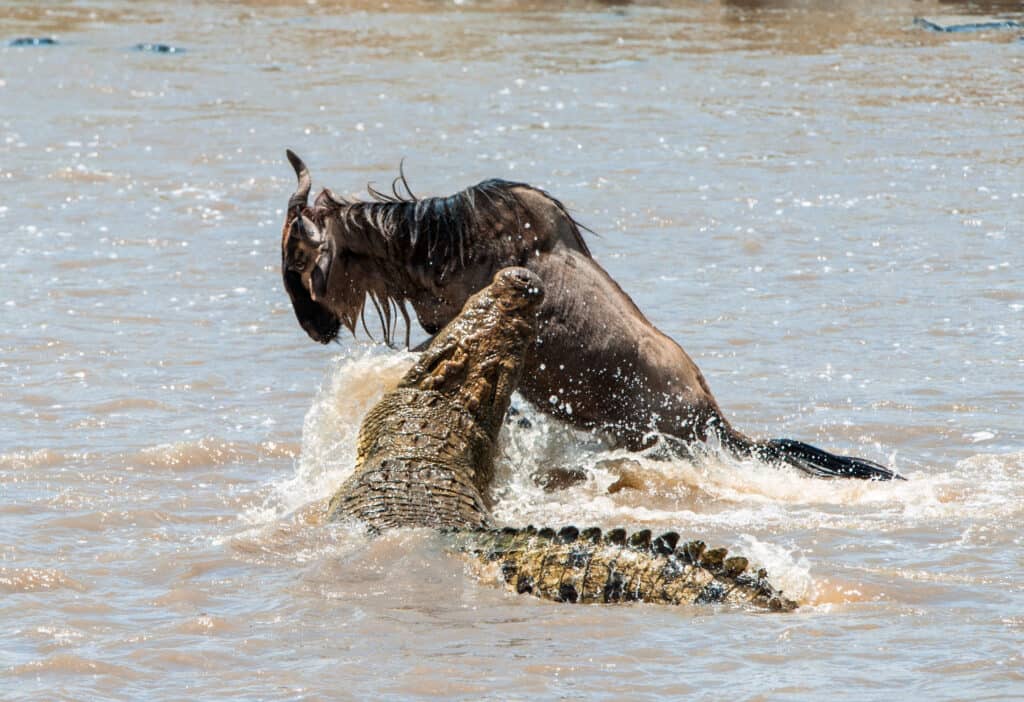The amazing Serengeti National Park is located in northern Tanzania and stretches over 5,700 square miles. It is famous for its stunning wildlife but the most spectacular sight of all is called ‘The Great Migration’. This is when millions of wildebeests, zebras, gazelles, and elands make the journey from the Southern Serengeti northwards to greener pastures and then back again. The wildebeest are the key players in this spectacular sight – around two million of them on the move at the same time. The journey involves several river crossings and this is when things can get hazardous. As this extraordinary clip shows, getting across a river can be very risky. Take a look at the wildebeest migrating across a river in the clip below.
Watch The Action Now
Wildebeest Migrating Across A River
Watching the above clip, you cannot help but wonder if there was a safer place for these wildebeest to cross! It shows a large herd at the top of a steep riverbank. Many are walking past but some decide to try to cross the river at this point. They scramble down a sheer cliff that is at least 15 feet high. Some land on their feet but others lose their footing and tumble into the river.
As more and more animals decide to take this route, the riverbank erodes further and becomes more treacherous. This does not put the wildebeest off. They continue to hurl themselves down the bank. In the foreground, you can see them trotting through the river safely.
Why Do Wildebeest Migrate?
According to the experts at Springfield Museums, the African Great Migration is the largest overland movement of wild animals on the planet. It is one of the seven natural wonders of the world.
The blue wildebeest spend January to March feeding on the Savanah grasslands of the southern Serengeti where there is rich green grass. However, around April, the grasslands dry up. The wildebeest follow rain patterns in the South West in a 500-mile loop. The exact timings are weather-dependent but they typically move again in May and June and in October head back to the southern Serengeti.
What Dangers Do Migrating Wildebeest Face?

Crocodiles lie in wait for migrating wildebeest.
©iStock.com/USO
As well as the obvious physical challenges featured in the above clip, other dangers are lurking for the wildebeest. On land, predators including lions and cheetahs are waiting to catch them. Packs of hyenas and wild dogs will also target wildebeest. Even when they get into the river they are not safe. Nile crocodiles are well aware that hundreds of potential prey are racing past them every minute. They wait in the water, ready to grab a passing meal. If you want to find out more about this spectacular phenomenon, we have all you need to know in our A-Z article The Great Migration in Africa: A Complete Guide to This Amazing Phenomenon.
The photo featured at the top of this post is © Dr Ajay Kumar Singh/Shutterstock.com
Thank you for reading! Have some feedback for us? Contact the AZ Animals editorial team.






